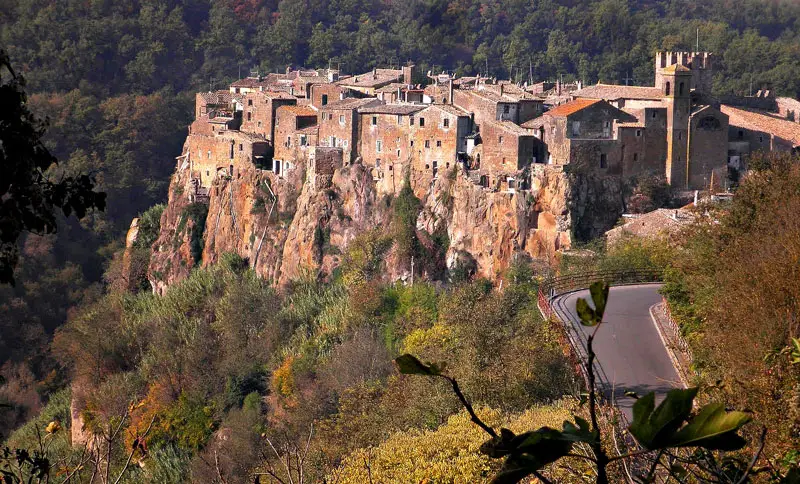
In all the Tuscia territory there has always been an intense volcanic activity, and this has shaped the area creating volcanic lakes and rock formations such as tuff.
Thanks to this activity the land became very fertile, good for wine production for example, and many thermal spring were created still used nowadays for healing purposes.
The tuff is the most used material in all the territory around Viterbo since the Faliscan and Etruscan period.
It is possible to clearly see this thanks to the well-conserved villages built mainly using tuff. This towns, often placed on spurs, are little jewels you can not miss if you are visiting the Tuscia.
Discover with this article the 5 Tuscia tuff villages you must visit during your stay.
Blera
The first city that we recommend is Blera, placed on a tuff plateau separated by two deep valleys, not far from the Marturanum Regional Park and Barbarano Romano, even accessible through an interesting hiking trail.
Its name probably comes from the Etruscan "phlera". The village was an important center since the Bronze Age and later became, thanks to its strategic location between two rivers, an very important Etruscan town between the seventh and fifth century B.C.
Around it there are many interesting necropolis which show the graet activity of this villag around the first century B.C.
Bomarzo
Bomarzo is only 20 minutes far away from Viterbo and it is particularly famous for the charming and unique Monsters Park and the Holy Wood realized by Vinicio Orsini in the seventieth century.
This project, unlike the typical italian garden of Villa Lante, has a particular architectonic structure for the period when it was built, and it is ornamented with huge tuff statues representing mythological figures and animals.
Calcata
This is a tiny village between Rome and Viterbo, chosen by many local artists, for its tranquility, its tiny alleys, its tuff houses and because it is part of the Treja Park, perfect place for nature lovers.
If you want to have more information about this village i suggest you to read this articleas well: Calcata: the village build on tuff between Rome and Viterbo
Civita di Bagnoregio
Civita di Bagnoregio is known worldwide as "the dying city". After a period of neglect, the town has become a center of great interest and every year many visitors come to visit it, intrigued by its history and by its own geology.
Long time ago the village was connected to Bagnoregio, town of which it is part, by a strip of land crossed by an ancient road that connected the area of the Tiber with the Lake of Bolsena.
The erosion of the clay soil rich in waterways and the earthquake of 1695 brought down the embankment and gave rise to the famous Valley of the Calanchi that we still admire nowadays and where a concrete bridge was built.
This is the only way to reach Civita di Bagnoregio. This place in astonishing even though needs continuous interventions to prevent further erosion and landslides.
Vitorchiano
Vitorchiano is a village of lava stone that rises on a massive tuff rock. A few kilometers from Viterbo, is the perfect combination of the two most famous stones of Tuscia, the red tuff and the austere gray Peperino, we have already seen in the beautiful old town of Viterbo, and in particular in the district of San Pellegrino.









